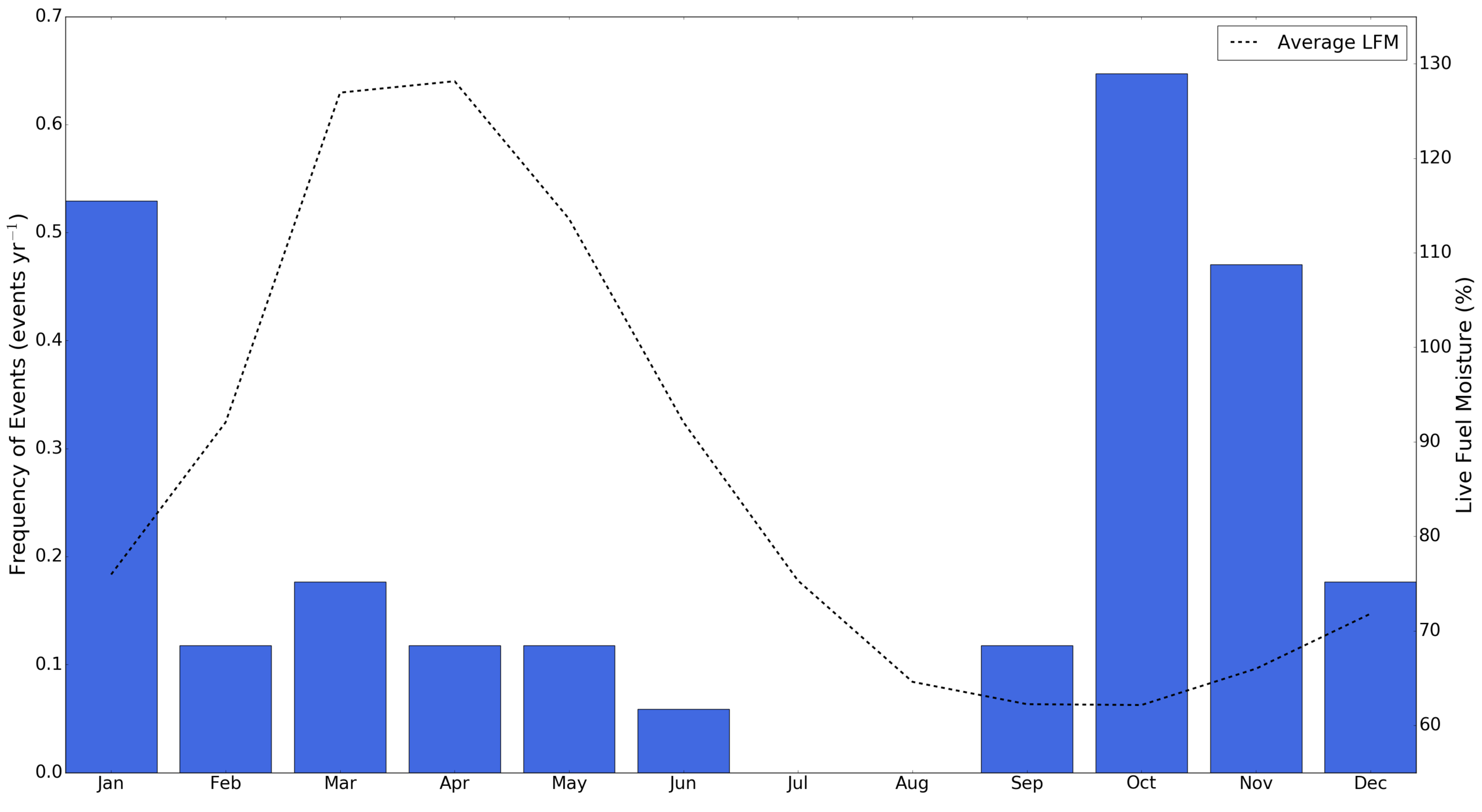Diablo Winds: California’s Critical Fire Weather Pattern
As we enter the fall in northern California, one thing is one everyone’s mind. Are we going to have Diablo winds like we did in 2017? Next week marks the one-year anniversary of the deadly Wine Country Fires. Three of the Wine Country Fires (Tubbs, Redwood Valley, and Atlas) as well as the Tunnel Fire (Oakland Hills) of 1991, rank in the top twenty of California’s deadliest wildfires (CalFire, 2017). All four of those fires, with the addition of the Nuns Fire (2017) are also ranked in the top twenty most destructive fires (CalFire, 2018) in California's history. The Tubbs Fire alone burned over 36,000 acres and caused 22 fatalities. These fires were driven by extreme winds known as Diablo Winds.
What is a Diablo Wind?
Diablo winds are offshore wind events that flow northeasterly over Northern California’s Coast Ranges, often creating extreme fire danger for the San Francisco Bay Area. Diablo winds are driven by a surface pressure gradient that forms in response to an inverted pressure trough that develops over California.
How frequent are Diablo Winds?
A 17-year climatology of regional surface stations was used to develop a definition of Diablo wind events as well as an analysis of their spatial distribution and event frequency. A synoptic composite of the identified events illustrate that Diablo wind events are associated with an inverted pressure trough that develops over California creating a pressure gradient from higher pressure over the interior northern Great Basin to lower pressure near the California coast. Results indicate Diablo winds affect regions throughout the San Francisco Bay Area with greater frequencies concentrated in the Coast Ranges nearest the Sacramento Valley. During the 17-year study period, the region experienced a mean annual frequency of 2.5 events with the highest frequency of Diablo wind events occurring in October when the live fuel moisture is also at a seasonal minimum leading to the most severe fire danger conditions for the San Francisco Bay Area.
The critical issue for the Bay Area is that Diablo Winds are most frequent during the fall and in particular October, when the fuel moisture content is lowest (See Figure 1 below).
FIGURE 1: MONTHLY FREQUENCY OF DIABLO WINDS AND AVERAGE LIVE FUEL MOISTURE CONTENT (DASHED LINE).
Numerical Simulations
To better understand the dynamics of Diablo Winds, Graduate student Carrie Bowers, who is wrapping up her MS thesis investigating Diablo Winds and the cause of the extreme fire spread observed during the Tubbs Fire, conducted high-resolution computer simulations of the Tubbs Fire event. Below is a cross-section of her high-resolution model simulations using WRF. You can see that the surface winds were extremely high during the event and that a unique hydraulic-jump feature formed in the lee of Mt. Helena east of Santa Rosa. This unique aspect of the wind flow classifies Diablo Winds as a downslope windstorm.
HIGH-RESOLUTION WRF SIMULATIONS OF THE WINDS DURING THE TUBBS FIRE, 8 OCTOBER 2017. THE TIMES LISTED ARE PACIFIC LOCAL TIME AND THE FIGURE REPRESENTS A WEST-TO-EAST CROSS-SECTION STARTING ABOUT 5 KM WEST OF COFFEY PARK AND ENDING 30 KM TO THE EAST. RED COLORS INDICATE WINDS FROM THE EAST (FROM THE RIGHT) AND BLUES INDICATE WINDS FROM THE WEST (FROM THE LEFT).



